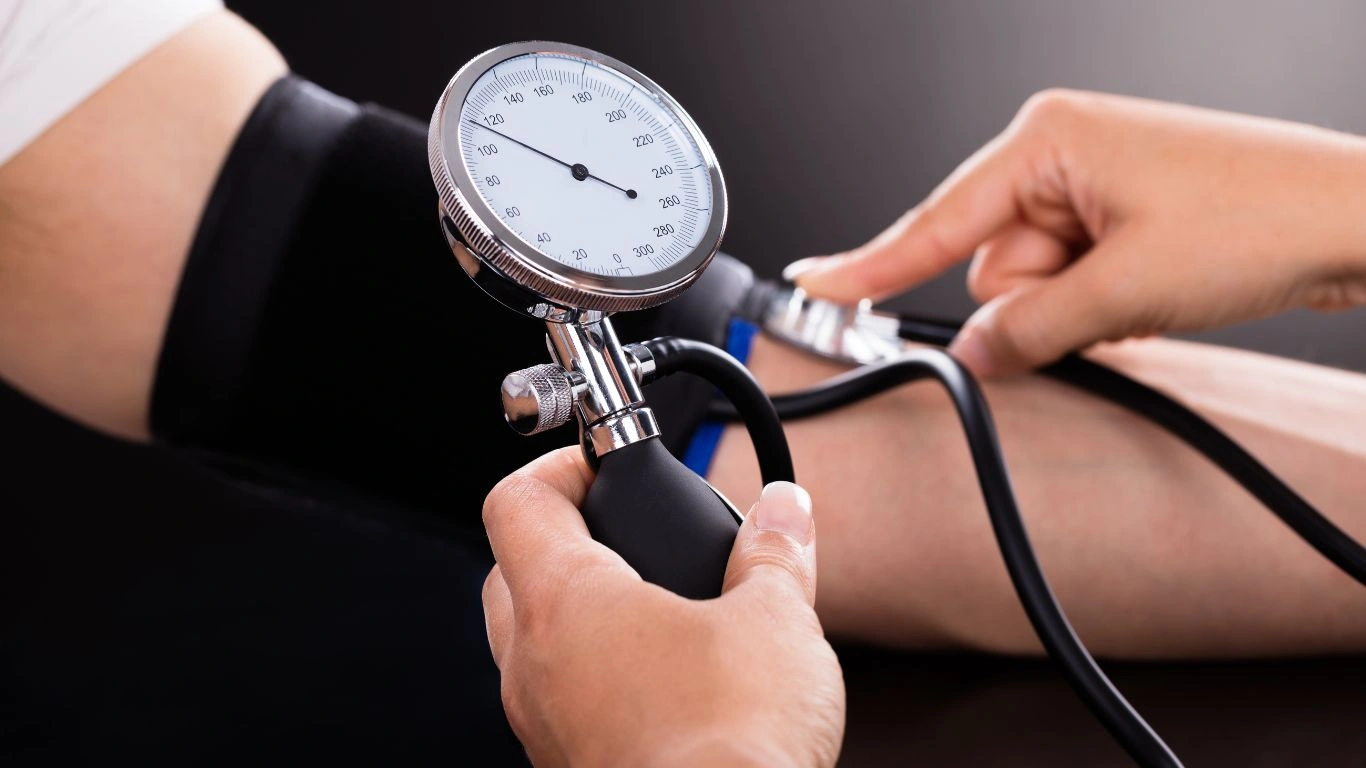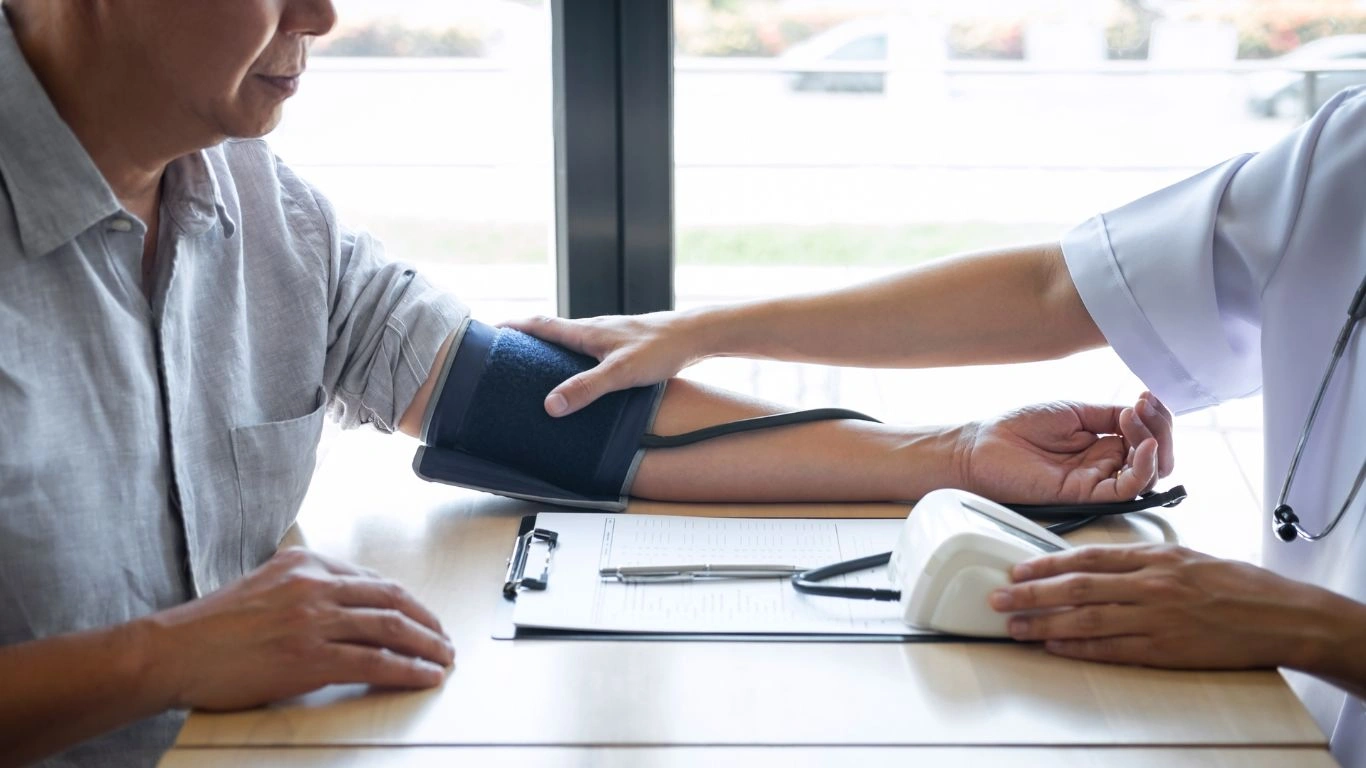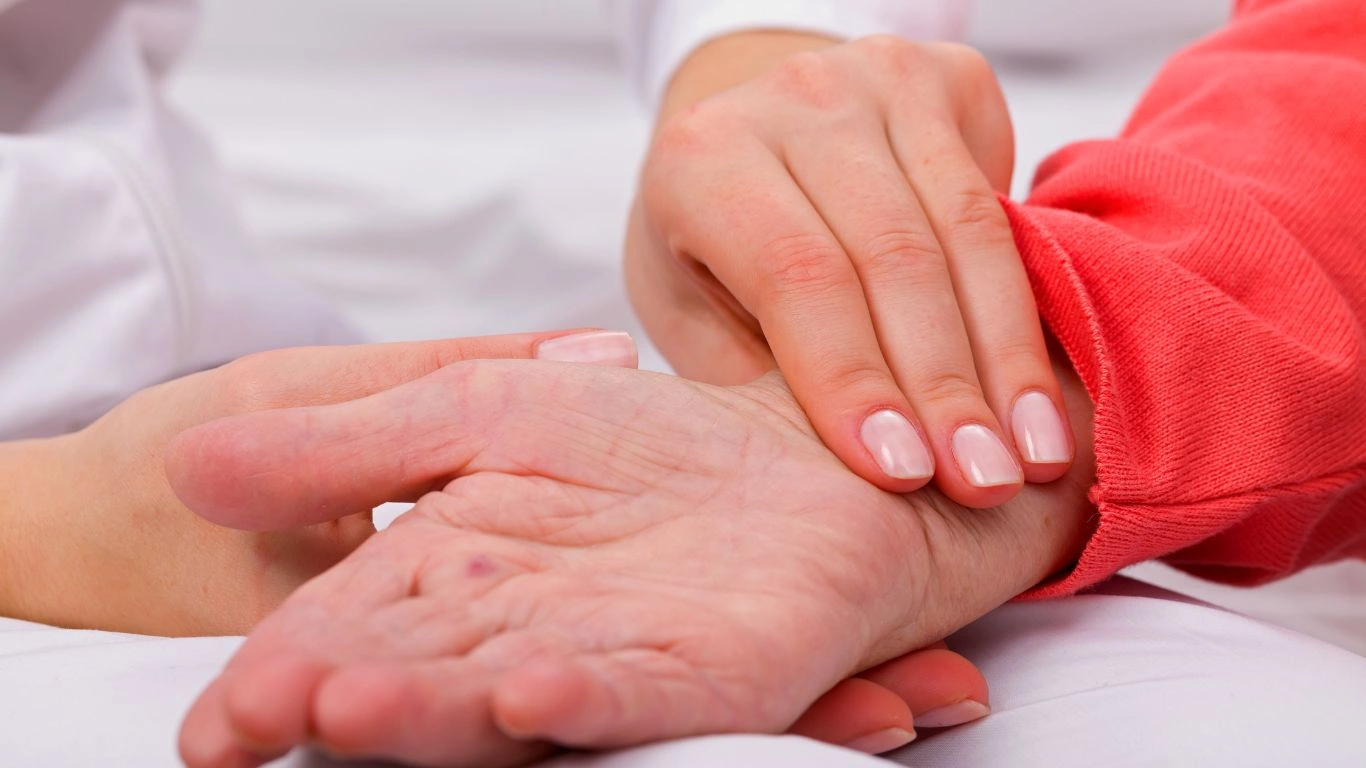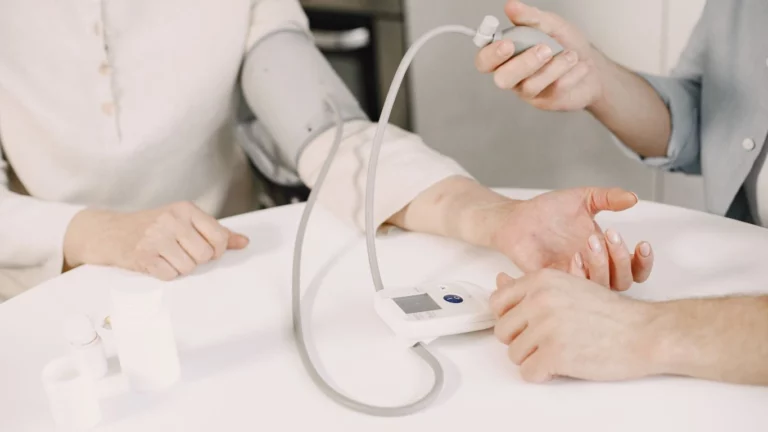Best Ways to Track Hypertension Symptoms for Better Control
If you’re living with high blood pressure—or treating patients who are—you probably know that symptoms can be sneaky, sporadic, or sometimes just downright silent. I’ve seen this play out countless times in my practice. A patient walks in feeling “fine,” but their blood pressure tells a different story. That’s why I always emphasize this: the best ways to track hypertension symptoms aren’t just about keeping a log of numbers. It’s about paying attention to how your body feels, what it’s trying to tell you, and making it a daily habit, not a reactive one. Let’s talk about what really works, from a physician who’s had more blood pressure cuffs on patients than I can count!
Why Tracking Hypertension Symptoms is More Than Just Numbers

Blood pressure readings give us valuable insights, but they don’t tell the whole story. Hypertension is often called the “silent killer” because symptoms, when they do show up, are easy to overlook. I’ve had patients dismiss early warning signs as stress or fatigue—until things escalate. By the time headaches become daily, or chest tightness becomes routine, we’ve already crossed a few warning lines.
How Symptoms Can Be Misleading
Here’s the tricky part—not everyone with high blood pressure experiences obvious symptoms. And those who do? The signs can mimic everyday stress, poor sleep, or even dehydration. We’re talking about:
- Frequent headaches (especially in the morning)
- Blurred vision or floaters
- Dizziness or lightheadedness
- Shortness of breath after minimal activity
- Chest pressure or fluttery heartbeats
I can’t tell you how many times someone told me, “I thought that was just getting older.” Nope. Sometimes, it’s your body waving a red flag you didn’t know to look for.
Best Ways to Track Hypertension Symptoms Consistently

Okay, here’s where things get practical. Tracking symptoms doesn’t need to be high-tech or complicated. It just needs to be consistent and intentional. Whether you’re managing your own blood pressure or supporting a loved one, here’s what I recommend based on years of clinical experience and a lot of trial-and-error with patients.
1. Start with a Blood Pressure Journal
Not just the numbers—include how you feel when you take a reading. Lightheaded? Anxious? Headache creeping in? Write that down. Over time, you’ll start to notice patterns that numbers alone can’t show. I often advise patients to use a simple notebook or a smartphone note app if that’s easier. Just don’t rely on memory—it’s rarely accurate when life gets busy.
2. Track Sleep and Stress Levels Daily
Two of the biggest hypertension triggers I see are poor sleep and unmanaged stress. They sneak up quietly but wreak havoc on your cardiovascular system. I often tell my patients, “Track your sleep the way you’d track your steps.” Apps like Sleep Cycle or even just jotting down sleep quality (1–10 scale) each morning helps identify when things are sliding off balance.
3. Monitor Physical Symptoms With a Weekly Checklist
Try creating a quick checklist you can run through once a week. It doesn’t have to be exhaustive—just ask yourself:
- Have I had more headaches than usual?
- Have I felt unusually tired or dizzy?
- Is my vision a bit off lately?
- Any moments of chest tightness or shortness of breath?
Checking in with your body like this makes it easier to detect subtle shifts before they turn into something more serious.
4. Don’t Skip the Emotional Check-Ins
This might surprise you, but emotional symptoms—like irritability, anxiety, or feeling “off”—can be early clues too. I’ve had patients realize their blood pressure spikes after heated arguments or stressful work meetings. Once we identify that trigger, we can start building strategies around it. Emotional awareness is just as important as physical tracking.
Personal Tip: Use Reminders and Visual Cues

In my own family, we’ve used sticky notes on the mirror, calendar alerts, even a blood pressure monitor by the coffee pot (because no one forgets coffee). Tracking only works if you remember to do it—and small reminders help keep health front and center without feeling overwhelming.
We’ll dive deeper into specific tech tools, home monitors, and symptom tracking apps next. But for now, if you’re just starting out, remember: awareness is the first step. Once you’re in tune with your body, tracking hypertension symptoms becomes less of a chore and more of a daily wellness check-in.
Tech Tools That Help Track Hypertension Symptoms Effortlessly

Let’s be real—most of us are glued to our phones anyway, so why not put that screen time to good use? I often recommend a few smart tools to my patients that take the guesswork out of symptom tracking. You don’t need to be tech-savvy; just a little curiosity and willingness to try something new can make a big difference.
1. Blood Pressure Monitoring Apps
These apps can sync with home blood pressure monitors and chart your readings over time. What I like about them is how easy they make spotting trends. You can literally pull up a graph and say, “Oh wow, my pressure spikes every Sunday night”—probably not a coincidence if Monday’s your busiest workday.
- SmartBP – Clean interface and great for exporting reports to your doctor.
- Heart Habit – I’ve had patients love this one for its reminders and wellness tracking.
- Apple Health / Samsung Health – If you’re already using a smartwatch, you may not need anything else.
2. Symptom Trackers That Go Beyond the Basics
Some apps don’t just log blood pressure—they help track the little things that matter: sleep, stress, mood swings, even sodium intake. That kind of data layering gives us a more complete picture. I’ve used that kind of patient data in clinic visits to adjust meds or recommend lifestyle tweaks. It’s a game-changer when the patient walks in with real-world context, not just numbers.
3. Wearables That Keep You in the Loop 24/7
Now, I don’t think everyone needs a smartwatch, but if you already wear one, take advantage of the features. Devices like Fitbit, Apple Watch, and Withings can offer early alerts if your heart rate or rhythm suddenly changes, which can sometimes correlate with blood pressure shifts—especially if you’re prone to hypertensive episodes or arrhythmias.
What I Tell My Patients: Focus on Patterns, Not Perfection

It’s easy to get caught up in one “bad” reading and spiral into worry. But blood pressure fluctuates naturally throughout the day. What we care about more is the overall pattern. I’ve seen patients panic over a single 150/90 reading, when in reality, their average is well-controlled.
Here’s how I break it down for them:
- Look at your average over a week – Not just one day. That smooths out any outliers.
- Check readings at the same times – Morning and evening are ideal for consistency.
- Rest for 5 minutes before taking it – Rushing around the house then sitting down to check? That’ll skew it.
By shifting the mindset from “I have to be perfect every reading” to “I’m learning my body’s patterns,” it relieves anxiety—and makes long-term management actually sustainable.
How Lifestyle Journaling Can Support Symptom Tracking

One of the best tools you can add to your hypertension toolkit is a simple lifestyle journal. I’ve used these personally and recommended them in clinic for years. There’s something about physically writing down what you ate, how you slept, and how you felt that really boosts self-awareness.
Include these sections in your journal:
- Sleep quality & hours
- Stress levels (rate from 1–10)
- Meals & sodium intake
- Hydration
- Symptoms noted (headaches, dizziness, fatigue)
- Blood pressure readings (include time of day)
Don’t worry if it’s not perfect. This is your tool—not a report card. The more real you are with yourself, the more useful the data becomes when you bring it into your doctor’s office. I’ve had patients catch patterns even I missed just by flipping through their own notes.
Why Partnering With Your Doctor Matters More Than Ever
This is one of those things I say often because it can’t be emphasized enough: symptom tracking is only one half of the equation. The other half? Communication. Sharing what you’re seeing, feeling, and logging with your doctor allows us to personalize your care in a way that a one-off office reading just can’t.
I always encourage my patients to bring their journals, screenshots of app data, or even a simple checklist of questions. That collaboration turns a routine visit into a real strategy session. The more connected we are, the better your chances of long-term blood pressure control—without unnecessary meds or guesswork.
We’ll get into diet, exercise, and supplement tips in the next section. But just know this: tracking your symptoms isn’t about obsessing—it’s about staying ahead of the curve. And trust me, your heart will thank you for it.
Integrating Lifestyle Changes with Symptom Tracking

Now that we’ve covered the tools and techniques for tracking hypertension symptoms, let’s delve into how lifestyle modifications can complement these efforts. In my practice, I’ve observed that patients who combine diligent symptom tracking with intentional lifestyle changes often experience the most significant improvements in their blood pressure control.
1. Dietary Adjustments: Embracing the DASH Diet
The Dietary Approaches to Stop Hypertension (DASH) diet is a well-researched eating plan that emphasizes fruits, vegetables, whole grains, and lean proteins while reducing sodium intake. I’ve had patients who, after adopting the DASH diet, not only saw improvements in their blood pressure readings but also reported increased energy levels and better overall well-being.
2. Regular Physical Activity
Engaging in regular physical activity, such as brisk walking, cycling, or swimming, can significantly lower blood pressure. I often advise patients to start with manageable goals, like 30 minutes of moderate exercise five days a week, and gradually increase intensity as tolerated. Tracking physical activity alongside blood pressure readings can help identify patterns and motivate continued adherence.
3. Stress Management Techniques
Chronic stress can contribute to elevated blood pressure. Incorporating stress-reduction techniques such as deep breathing exercises, meditation, or yoga can be beneficial. I’ve found that patients who practice mindfulness regularly often report not only lower blood pressure readings but also improved mental clarity and emotional resilience.
Leveraging Technology for Comprehensive Monitoring

In today’s digital age, numerous tools can assist in monitoring hypertension symptoms and supporting lifestyle changes. Here are a few I’ve recommended to patients:
- SmartBP: This user-friendly app allows for easy recording and analysis of blood pressure readings, enabling patients to share data with their healthcare providers seamlessly. Learn more.
- Bearable: Ideal for tracking a range of symptoms, including mood, sleep, and medication adherence, providing a holistic view of one’s health. Explore the app.
- Blood Pressure Tracker: A straightforward app that helps log blood pressure readings and monitor trends over time. Download here.
Integrating these tools into daily routines can enhance self-awareness and empower patients to take proactive steps in managing their hypertension.
Collaborating with Healthcare Providers
While self-monitoring is invaluable, it’s essential to maintain regular communication with healthcare providers. Sharing tracked data during appointments can inform treatment decisions and adjustments. In my experience, patients who actively engage in their care and bring comprehensive logs to visits often achieve better outcomes.
Moreover, discussing any new or worsening symptoms promptly ensures timely interventions, preventing potential complications associated with uncontrolled hypertension.
References
- American Heart Association: Home Blood Pressure Monitoring
- Mayo Clinic: High Blood Pressure Diagnosis and Treatment
- CDC: Measuring Your Blood Pressure
- SmartBP App
- Bearable Symptom Tracker
- Blood Pressure Tracker App
Disclaimer
The information provided in this article is for educational purposes only and is not intended as medical advice. Always consult with a qualified healthcare provider for personalized guidance and treatment plans related to hypertension or any other medical condition.

Dr. Gwenna Aazee is a board-certified Internal Medicine Physician with a special focus on hypertension management, chronic disease prevention, and patient education. With years of experience in both clinical practice and medical writing, she’s passionate about turning evidence-based medicine into accessible, actionable advice. Through her work at Healthusias.com, Dr. Aazee empowers readers to take charge of their health with confidence and clarity. Off the clock, she enjoys deep dives into nutrition research, long walks with her rescue pup, and simplifying medical jargon one article at a time.






